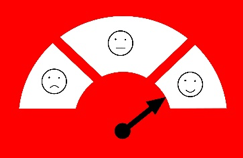Module 2 Chapter 2: Formulating Practice Evidence Questions
- the COPES framework for developing strong practice questions to inform the search for evidence,
- the PICO framework for developing practice questions,
- a working example where COPES was applied.
Question Formulation
The questions that drive a social worker’s search for evidence to inform practice decisions differ somewhat from the kind of questions that drive social workers to understand diverse populations, social work problems, and social phenomena. Two frameworks for helping develop questions for evidence-based practice are prevalent in the literature: COPES and PICO.

Using the COPES Framework to Formulate the Practice Question.
The COPES framework refers to engaging in a Client Oriented Practical Evidence Search. In this framework, the client system might be an individual client, individuals in a relationship, a family, a group, an agency or institution, a neighborhood or community, or larger social system.
Well-formulated COPES practice questions, according to Gibbs (2003) have four features:
- Client type and problem. The practitioner to specifically identifies the client system, what problem the client system experiences, and the practice context in which intervention would or could occur. This is at the heart of the Client Oriented approach—the COPES question is central to the welfare of the client system and those whose lives are affected by the client. For example, a social worker in a hospital setting being able to address an individual’s probable alcohol use disorder is important to that person, as well as to that person’s family, friends, co-workers, and others (including the general public who share the road with this person when driving). The problem is complicated by the fact that feedback handled poorly leads to a person becoming become angry and resistant to seeking treatment for the suspected alcohol problem.
- What you might do. This involves identifying a possible strategy for intervening around the identified practice problem. This includes whether the approach will be a specific treatment intervention, acting to prevent a problem, measuring to assess a problem, screening to assess risk, surveying clients, or engaging in some other specific action. Considering our alcohol use disorder example from step 1, the strategy might be to engage in screening for an alcohol problem and to provide feedback about the screening results using a Screening, Brief Intervention, and Referral to Treatment (SBIRT) approach—SBIRT is based on principles of screening and feedback using a motivational interviewing (MI) approach.
- Alternative course(s) of action. This involves the practitioner identifying at least one main alternative course of action for addressing the identified problem. This might possibly include doing nothing, observing and monitoring over time, or applying a specific intervention protocol. In our alcohol use disorder example, the alternative might be to monitor the problem over time if the screening result indicates a low likelihood of a substance use problem. Or, it might be to refer the individual for specialized assessment and treatment for an alcohol/substance use disorder if the screening result indicates a moderate or high likelihood of an alcohol/substance use problem.
- What you want to accomplish. This feature specifies what will be accomplished with the intervention the evidence leads you to select. In other words, what outcome(s) should be expected if the intervention is successful—defining the goal of intervening in this way. This is directly related to the Practical aspects of the COPES question—not only does it have practical relevance to the client, it has relevance to social workers who encounter this problem with frequency in their routine practice. In our alcohol problem example, the goal would be for the person to engage in alcohol treatment if the drinking problem is serious enough or for the person to cut down on drinking if the problem does not warrant treatment but is causing problems for the person (and significant others).
Furthermore, the COPES question leads the practitioner’s Evidence Search. It contains information to guide the selection of key terms for an electronic search of literature and other appropriate sources of evidence. To complete our example, the COPES question could be phrased as follows:
If a person seen in the hospital setting is suspected of having an alcohol use disorder, would the SBIRT or Johnson Model Intervention be more likely to result in either becoming engaged in treatment for an alcohol use disorder (if warranted) or decreasing problematic alcohol use (if treatment is not warranted)?
Searching for evidence around this question led the social worker to support adopting an SBIRT approach within the medical/hospital setting. (The Johnson Model is similar to what you see on the television show,Intervention. The evidence does not consistently support applying this confrontational approach.)
In addition to specifying the four features of a well-constructed COPES question, Gibbs (2003) identified five general types of COPES questions:
- effectiveness
- prevention
- assessment
- description, and
- risk.
He provided examples of each in a table with the prior four features of well-constructed COPES questions across the top and these five question types down the left side. This format (adapted from Gibbs, 2003) guides practitioners in moving toward a well-specified COPES question.
| client type and problem[1] | what you might do[2] | alternative course of action[3] | what you want to accomplish[4] | |
| effectiveness | ||||
| prevention | ||||
| assessment | ||||
| description | ||||
| risk |
Here are examples Gibbs (2003) provided, edited for format (see originals at http://www.evidence.brookscole.com/copse.htmland http://www.evidence.brookscole.com/moredetails.html). Note that [1]through [4]refer to each of the four features of well-formulated COPES questions running along the top of the table.
- Effectiveness. Effectiveness questions ask about the direct effects of exposure to an intervention for a specified type of client or population. Gibbs’ (2003) first example:
“If disoriented aged persons who reside in a nursing home[1]are given Reality Orientation Therapy[2] or Validation Therapy[3] which will result in better orientation to time, place, person[4]?”
Gibbs’ (2003) second example:
“Among adult criminal offenders on probation,[1] will a group cognitive intervention program[2] compared to no such program[3] result in a lower recidivism (re-offense) rate[4]?”

Prevention.The prevention type of question is also an effectiveness question, but it concerns interventions intended to avoid the problem occurring rather than treat it after the fact. Gibbs’ (2003) first example:
“If sexually active high school students at high risk for pregnancy[1] are exposed to Baby-Think-It-Over[2] or to didactic material on proper use of birth control methods,[3] will the former have fewer pregnancies during an academic year and better knowledge of birth control methods?[4]”
Gibbs’ (2003) second example is a little different from the previous examples in that the social worker does not yet know which specific intervention to search:
“Among Hmong and Asians less than sixteen years old,[1] which gang prevention program[2,3] will most effectively prevent them from joining the gang[4]?”

- Assessment. Social workers engage in assessment at multiple points in the process of intervening with client systems. Assessment involves applying standardized procedures or measures with the goal of determining whether the client system demonstrates a particular problem or strength. Assessment is also used to determine whether an intervention has achieved its goals. The literature search can help identify valid and reliable approaches to screening and assessment. Gibbs’ (2003) first example:
“If aged residents of a nursing home who may be depressed or may have Alzheimer’s Disease or dementia[1] are administered depression screening tests[2] or short mental status examination tests[3] which measure will be the briefest, most inexpensive, valid and reliable screening test to discriminate between depression and dementia?[4]”
Gibbs’ (2004) second example also presumes that the social worker has little pre-existing knowledge about the best assessment tools:
“To detect children with shaken baby syndrome[4], which assessment or diagnostic procedure will provide the most valid and reliable determination[2,3] that the child has been injured by shaking[1]?”
Gibbs (2003) offered a third example of an assessment question, one which is actually about screening, which is a step that precedes a more detailed, in-depth assessment.
“For hospitalized aged persons suspected of having dementia,[1] which rapid assessment measure[2,3] will most quickly, reliably, and validly identify demented patients[4]?”
And, Gibbs offered an example that looks at assessment of an interdisciplinary team’s functioning, rather than assessing specific client systems—he classified this example as descriptive, but it seems to fit as an assessment question (see what you decide):
“If members of a hospital team who are concerned about team functioning[1] take the Preliminary Checklist (Clinical) Team Effectiveness test[2] or take the Interdisciplinary Team Weekly Inventory[3] which measure will most reliably and validly reflect the team’s ability to accomplish tasks[4]?”

- Description. This is what Gibbs (2003) said about description questions:
“Description questions most often concern surveys of client needs or client satisfaction, but can include any kind of effort that involves observations of clients within a sample and generalizations made from that sample. Description Questions can include qualitative studies that often seek an in-depth understanding for client experiences and perceptions” (retrieved from http://www.evidence.brookscole.com/moredetails.html)
Gibbs (2003) offered a description question to consider:“Among children in integrated children’s homes or orphanages,[1] at what age[2,3] do they first begin to see themselves as being either of white or black race[4]?”
Another example that Gibbs (2003) presented starts out sounding like an effectiveness or assessment type question, but becomes a description question in the end:“If family members of persons diagnosed with aphasia meet in a support group[1] and receive a short client satisfaction questionnaire for all support group participants[2,3] which will the clients list as their area or areas of greatest and least satisfaction[4]?”

- Risk. Risk is another type of assessment question that attempts to predict the future. In medical terms, this is often called the prognosis. It is about the probability of a specific consequence happening and often includes specification of that consequence and the time frame under consideration. Gibbs’ (2003) first example”“If crisis line callers to a battered women shelter[1] are administered a risk assessment scale by telephone[2] or we rely on practical judgment unaided by a risk assessment scale[3] then will the risk assessment scale have higher reliability and predictive validity for violent behavior[4]?”Gibbs’ (2003) second example is:
“For abused or neglected children placed in foster care by a protective service worker,[1] which risk assessment measure will provide the greatest predictive accuracy[2,3] to predict re-abuse when children are placed back into their homes with their families[4]?”A third example provided by Gibbs (2003) is:“Among chronically mentally ill clients,[1] is the Brief Psychiatric Rating Scale[2] compared to other suicide prevention instruments[3] as accurate at predicting actual suicide or suicidal behaviors[4]?”

A final note about the examples presented by Gibbs is warranted: these were published prior to a point in time when social work professionals were conscientiously addressing the language that we use to describe people and populations. If he were writing today, Gibbs would likely revise many of these COPES questions to eliminate labelling language (e.g., “disoriented aged persons,” “adult criminal offenders,” and “chronically mentally ill”). It is a sign of the times that we address this issue of language use at all.
Using the PICO Framework to Formulate the Practice Question.
- Patient (or client or consumer) refers to specifically identifying the characteristics of the population around which the search for evidence is directed.
- Intervention requires specification of the interventions or other practice activities (e.g., type of assessment or clinical test, treatment, prevention, or policy) under consideration.
- Comparison is the act of comparing the intervention options identified in the prior step.
- Outcome refers to the goal or goals to be achieved by intervening.
“If an elder residing in a nursing home[1] participates in a pet therapy program[2] or attends an adult day program[3] which intervention will result in lower depression[4]? (Heltzer, n.d., p. 2)
Where COPES and PICO Questions Fit
As you may recall from our earlier course, there are two general categories of questions that practitioners might ask: background and foreground questions. COPES and PICO questions fit under the heading of foreground questions because the practitioner seeks evidence to inform professional practice decision-making. COPES and PICO questions are complex forms of foreground questions. The COPES framework was developed on the PICO structure, but designed for use in non-medical contexts (Gibbs, 2003), which explains why they appear to be so similar. The main reason for sharing the PICO framework in a social work course is because social workers often work on interdisciplinary teams with practitioners trained in medical models. Knowing how to engage in COPES prepares social workers to function with colleagues trained in PICO, and vice versa.
Working Example: Addressing High School Dropout
Here is an example of a practice question that we can follow through the next chapters. The example details steps in evidence-based practice decision-making described in a chapter by Kelly and Franklin (2011).

Background
“…we can’t keep doing the same things we’ve been doing and expecting a new result. It’s time to make some changes in our dropout interventions…” (Kelly & Franklin, 2011, p. 141).
What are best practices for preventing student dropout from high school?
What are the outcomes of the problem?How are poor and minority youth at risk of dropping out?
“If students deemed at risk for dropping out of high school are given a specific school-based dropout intervention program or standard school-based intervention, such as counseling and academic advising, will the school-based dropout program produce better outcomes, specifically helping youths stay in school and graduate on time? (Kelly & Franklin, 2011, p. 147).
Stop and Think
 Take a moment to complete the following activity.
Take a moment to complete the following activity.
